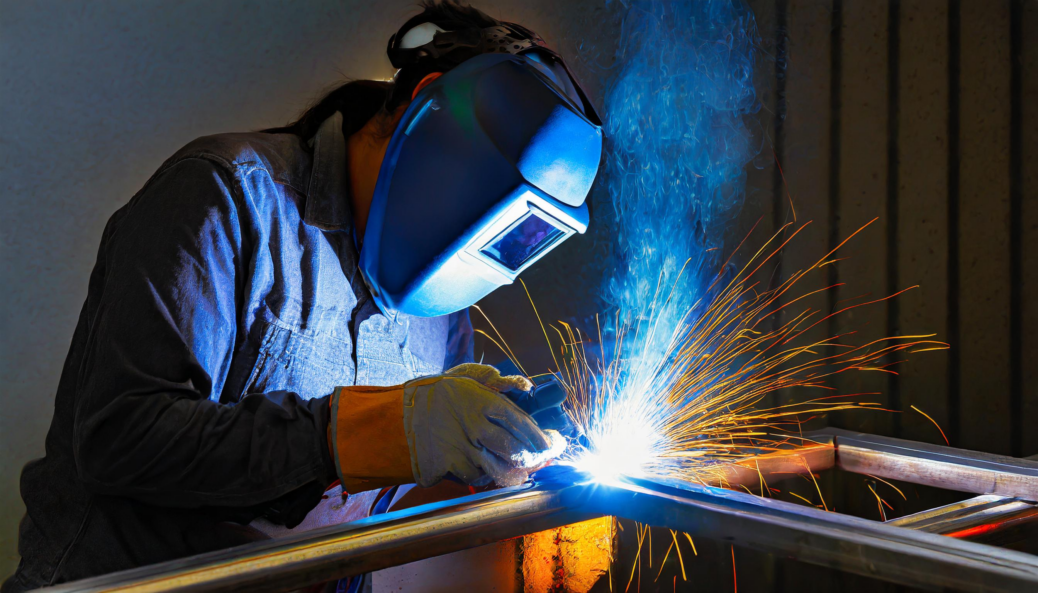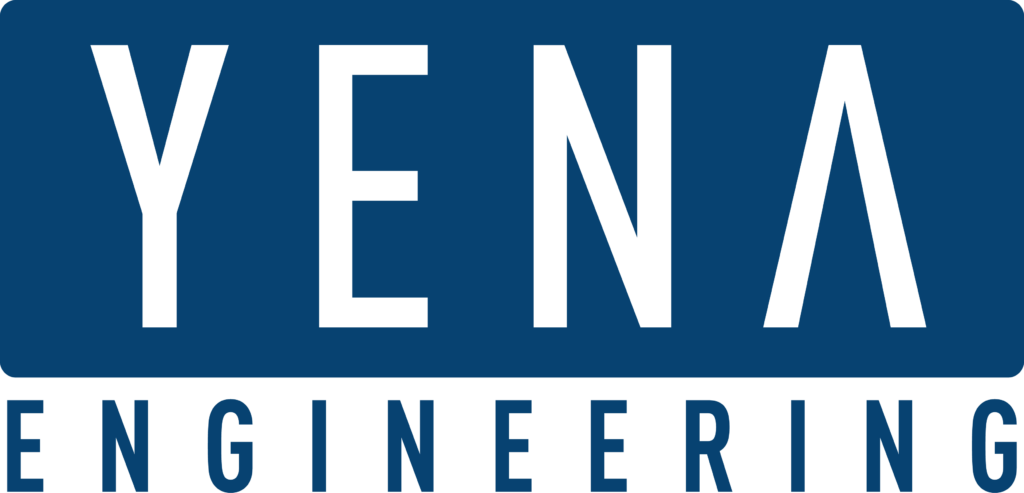Introduction to Aluminium Welding
Aluminium, known for its lightweight, strength, and corrosion resistance, is a preferred metal in various industries ranging from aerospace to automotive and construction. Its versatility not only makes it ideal for structural applications but also for intricate design work, highlighting the need for effective welding techniques to maximize its benefits.
Aluminium welding presents unique challenges due to its distinct properties compared to other metals. However, with the right techniques and knowledge, professionals can overcome these hurdles to achieve strong, durable welds. This guide explores the intricacies of aluminium welding, offering valuable insights for both novice and experienced welders.
Understanding Aluminium’s Welding Challenges
Aluminium’s thermal conductivity, oxide layer, and lower melting point significantly affect its welding process. Unlike steel, aluminium’s surface oxide melts at a much higher temperature than the metal itself, necessitating specific approaches to welding to prevent workpiece contamination and achieve a quality join.
Common Issues in Aluminium Welding
Aluminium welding, while advantageous for its lightweight and corrosion-resistant properties, introduces several challenges not as prevalent in other metals. Key issues include:
Porosity
Porosity in aluminium welding is primarily caused by hydrogen entrapment. Aluminium’s high affinity for oxygen leads to the formation of aluminium oxide on its surface, which can absorb moisture from the air. During welding, the moisture vaporizes, releasing hydrogen into the weld pool, where it becomes trapped as the metal cools and solidifies. This results in porous, weak welds. To mitigate porosity, welders must ensure materials are stored in a dry environment and preheated as necessary to evaporate any moisture. Additionally, using a welding gas with a higher argon content can help reduce porosity, as argon helps to stabilize the arc and reduce oxidation.
Thermal Distortion
Aluminium’s high thermal conductivity and low melting point contribute to significant thermal distortion during welding. This can lead to warping or bending of the workpiece, affecting dimensional accuracy and fit-up. To control thermal distortion, welders can use techniques such as tack welding at several points to ensure alignment, employing a welding sequence that distributes heat evenly across the workpiece, and utilizing intermittent welding (stitch welding) to allow the material to cool between welds, reducing the overall heat input.
Oxide Inclusion
The oxide layer on aluminium’s surface melts at a significantly higher temperature than the aluminium itself. If not properly removed before and during welding, this oxide layer can become included in the weld, leading to weak joints susceptible to cracking. To prevent oxide inclusion, the surface should be thoroughly cleaned before welding, using mechanical methods such as brushing with stainless steel brushes or chemical methods like etching with a suitable solvent. Additionally, using an alternating current (AC) when TIG welding helps to “clean” the surface of the aluminium during the welding process, breaking up the oxide layer.
Preparation for Aluminium Welding
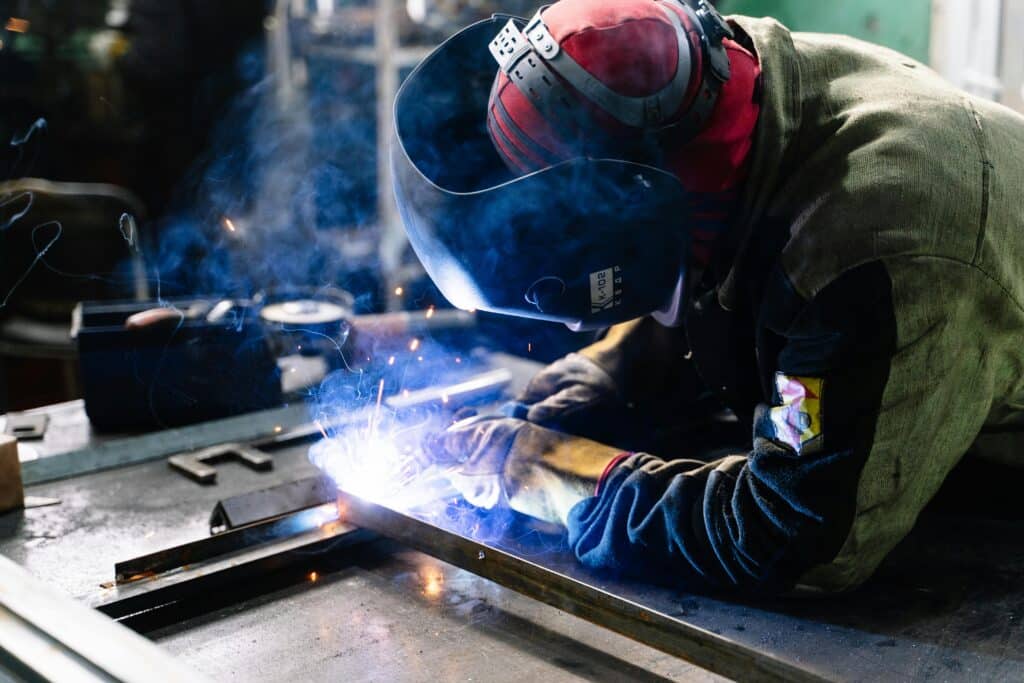
Effective preparation is critical for achieving high-quality aluminium welding. The preparation process involves several steps designed to address the metal’s unique properties:
Cleaning and Prepping Aluminium Surfaces
Properly cleaning aluminium surfaces prior to welding is essential for removing contaminants, including the stubborn oxide layer and any oil or grease. Mechanical cleaning methods, such as using a stainless-steel brush, are effective for breaking up and removing the oxide layer. The brushing should be done in one direction to avoid embedding contaminants into the aluminium surface. Chemical cleaning involves solvents or alkaline solutions to remove grease and oils, followed by an acid etch to remove the oxide layer. It’s important to rinse and dry the workpiece thoroughly after chemical cleaning to prevent any residue.
Choosing the Right Aluminium Alloy
Aluminium’s weldability varies significantly across different alloys, primarily classified into heat-treatable and non-heat-treatable categories. Non-heat-treatable alloys, such as those in the 1xxx, 3xxx, and 5xxx series, generally offer better weldability and are less prone to cracking. Heat-treatable alloys, like the 6xxx series, can be more challenging due to their susceptibility to hot cracking.
When selecting an aluminium alloy for welding, considerations should include the base metal’s mechanical properties, the welding process to be used, and the final application’s performance requirements. Using a filler material that closely matches the base metal’s composition can help mitigate potential issues like cracking and ensure a stronger, more durable weld. By thoroughly understanding and addressing these common issues and preparation steps, welders can significantly improve the quality and strength of their aluminium welds, overcoming the material’s inherent challenges to take full advantage of its beneficial properties.
Welding Aluminium to Aluminium
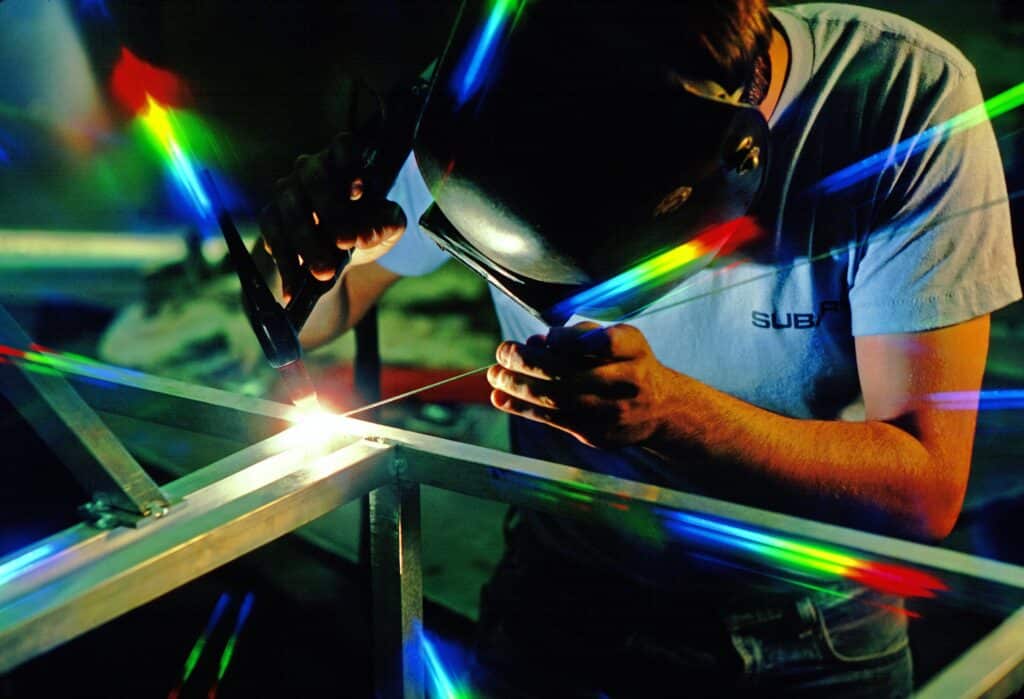
Welding aluminium to aluminium requires a nuanced understanding of the material’s properties. For TIG (Tungsten Inert Gas) welding, the process involves creating an arc between a non-consumable tungsten electrode and the aluminium workpiece, using an inert shielding gas (usually argon) to protect the weld pool from atmospheric contamination. TIG welding allows for the precise control of welding variables, making it ideal for thin aluminium sheets. Key parameters include electrode type (pure tungsten or zirconated tungsten), electrode diameter (typically ranging from 1.6mm to 3.2mm depending on current), and AC balance control to manage the cleaning action versus penetration into the workpiece.
For MIG (Metal Inert Gas) welding, the process uses a consumable wire electrode fed through a welding gun, also shielded by an inert gas. MIG welding is preferred for its speed and efficiency, especially on thicker aluminium sections. Critical parameters include choosing the right type and diameter of the aluminium wire (commonly 4043 or 5356 alloys), wire feed speed, and welding current. The use of a push-pull gun or a spool gun helps to prevent wire feeding problems associated with the softness of aluminium wire.
Tips for Strength and Durability of Aluminium Welds
To enhance the strength and durability of aluminium welds, consider the following:
Preheating
For thick sections, preheating (up to 150°C) can reduce the thermal gradient between the weld area and the rest of the workpiece, minimizing thermal stress and distortion.
Welding Speed
Optimal welding speed is crucial to avoid overheating, which can lead to burn-through in thin materials or insufficient penetration in thicker sections.
Filler Material Selection
The choice of filler material should be based on the aluminium alloys being joined, aiming for compatibility to avoid cracking and to ensure mechanical properties are met. For example, 5356 filler wire is a common choice for welding 5xxx series aluminium alloys due to its high strength and good feedability.
Welding Aluminium to Metal
Welding aluminium to steel or other metals introduces the issue of vastly different melting points and thermal conductivities, as well as the potential for brittle intermetallic compounds. One effective solution is the use of bimetallic transition inserts, which are essentially interlayers that are metallurgically bonded to aluminium on one side and steel (or another metal) on the other. These inserts can be welded to the aluminium using standard aluminium welding techniques (like TIG or MIG) and to steel using steel welding techniques, creating a bridge that mitigates the formation of brittle phases.
Best Practices for Hybrid Welds
Control Heat Input
Precise control overheat input is essential to prevent excessive intermetallic compound formation, which can weaken the joint. Techniques such as pulse welding can be effective.
Advanced Welding Methods
Friction stir welding (FSW) has emerged as a leading method for joining dissimilar metals, including aluminium to steel, offering high joint strength without melting the base materials. This solid-state joining technique involves a non-consumable tool that generates frictional heat and plastic deformation at the weld interface, preventing intermetallic compound formation.
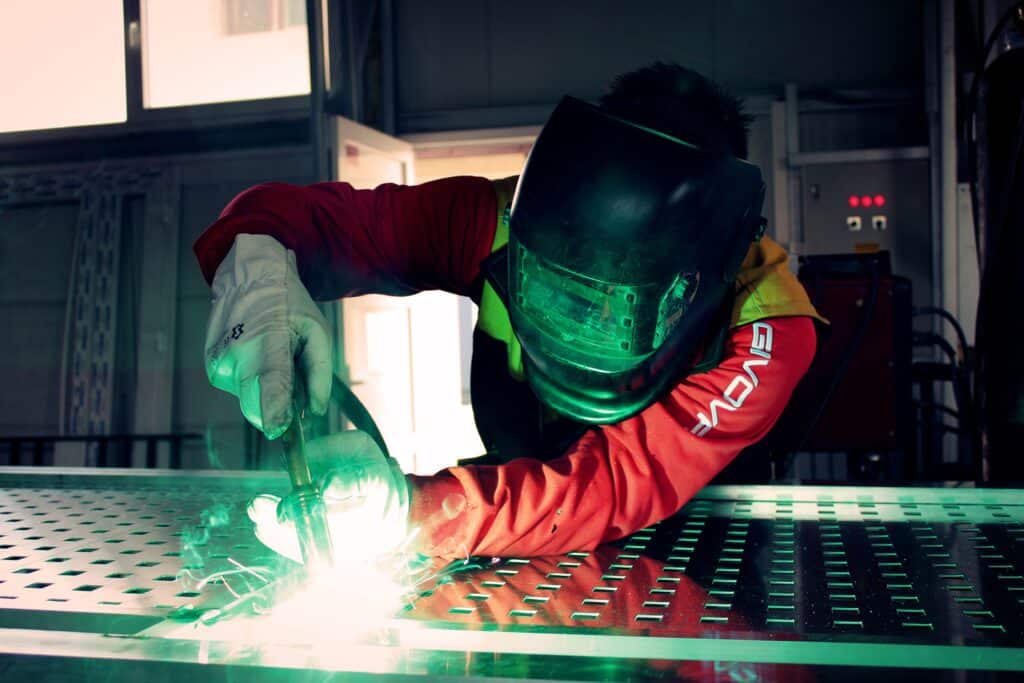
Arc Aluminium Welding
Arc welding for aluminium primarily involves GTAW (TIG) and GMAW (MIG) processes, each suited to different thicknesses and applications. TIG welding is renowned for its precision, making it ideal for welding thinner aluminium materials where control and aesthetics are paramount. This method allows for the welding of as thin as 0.6 mm aluminium sheets. MIG welding, on the other hand, is valued for its efficiency and suitability for thicker aluminium sections, capable of handling materials over 1 mm thick with ease.
Advantages of Arc Aluminium Welding
- TIG: High-quality, precise welds; excellent control over the weld bead; and minimal spatter.
- MIG: Faster welding speeds; suitable for longer welds and thicker materials; adaptable to automated systems.
Disadvantages of Arc Aluminium Welding
- TIG: Slower than MIG; requires significant skill and experience.
- MIG: Can be challenging to control on thinner materials; potential for greater spatter and cleanup.
Techniques and Tips to Get the Best Results with Arc Aluminium Welding
AC (Alternating Current) for TIG
Utilizing AC helps to clean the oxide layer on aluminium’s surface during the welding process, improving fusion and reducing the likelihood of inclusion defects.
Pulse Welding
Both for TIG and MIG, pulse welding modulates the current between a high peak to achieve penetration and a low background to cool the weld pool, minimizing heat input, reducing distortion, and improving control over the weld bead formation.
TIG Aluminium Welding
TIG aluminium welding offers the advantage of producing clean, high-quality welds with excellent appearance and minimal spatter. The technique’s precision makes it ideal for applications requiring detailed workmanship. However, it’s relatively slow and requires high skill levels to perform effectively, especially in controlling the heat input and maintaining arc stability.
Techniques and Tips to Get the Best Results with TIG Aluminium Welding
AC Balance Control
Adjusting the AC balance control allows the welder to set the proportion of time the current spends in electrode positive versus electrode negative, affecting oxide cleaning and penetration depth.
Electrode Preparation
Sharpening the tungsten electrode to a fine point helps concentrate the arc for better control and penetration. However, a too sharp point can lead to tip melting; thus, a slightly truncated tip is often recommended for AC TIG welding of aluminium.
MIG Aluminium Welding
MIG welding is favoured for its productivity and the ability to fill larger joints quickly. It’s suitable for a wide range of aluminium thicknesses but can be challenging with very thin materials due to the risk of burn-through. Managing the softer aluminium wire and preventing wire feed issues are notable challenges.
Techniques and Tips to Get the Best Results with MIG Aluminium Welding
Wire Feeder Configuration
A spool gun or push-pull system is essential for feeding aluminium wire smoothly to avoid nesting or tangling.
Spray Transfer Mode
Employing a spray transfer mode, where the wire melts into tiny droplets that spray across the arc into the weld pool, is effective for aluminium. This requires higher voltage settings and argon-rich shielding gas but results in a stable arc and reduced spatter.
Stick Aluminium Welding
Stick welding (SMAW) is not as commonly used for aluminium due to the challenges associated with feeding aluminium electrodes and the necessity for clean, oxide-free welds. However, it can be advantageous in certain conditions, such as outdoor welding or where equipment portability and simplicity are required.
Advantages of Stick Aluminium Welding
- Portability and simplicity of the equipment.
- Feasibility for outdoor use, even in windy conditions.
Disadvantages of Stick Aluminium Welding
- Difficulty in feeding aluminium electrodes smoothly.
- Greater skill is required to manage the fast-freezing weld pool and prevent defects like porosity and inclusion.
Techniques and Tips to Get the Best Results with Stick Aluminium Welding
Electrode Selection
Use electrodes specifically designed for aluminium, such as those with a higher cellulose content, to improve arc stability and weld pool cleanliness.
Short Arc Length
Maintain a short arc length to protect the weld pool from atmospheric contamination and to improve arc stability.
Pre-Cleaning
Thoroughly clean the weld area to remove the oxide layer and any contaminants that could lead to weld defects.
Backstep Technique
Use the backstep technique to control heat input and minimize warping. This involves welding in a direction opposite to the general progression, reducing thermal stress.
Troubleshooting Common Aluminium Welding Problems
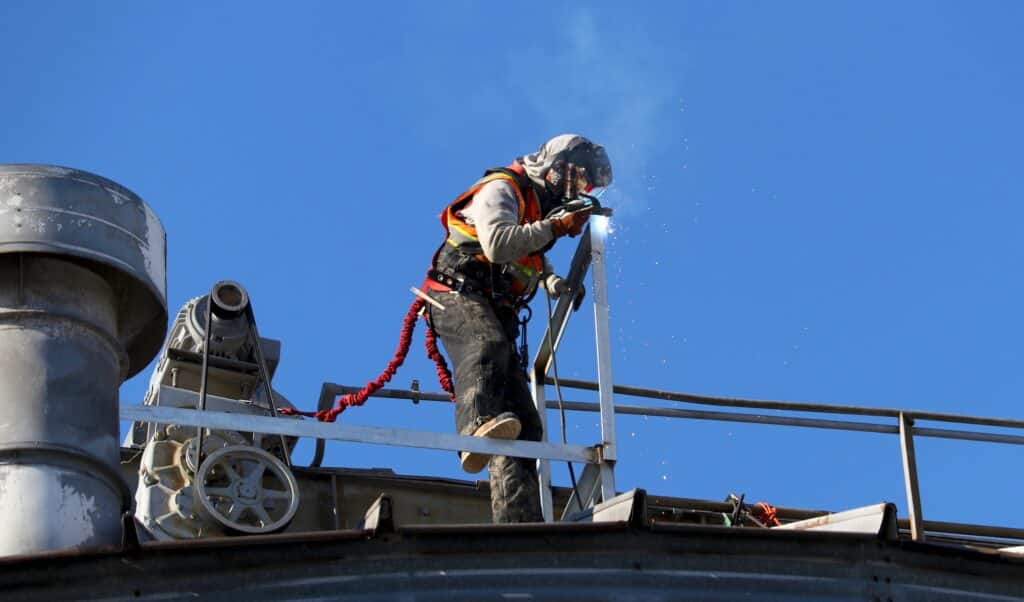
Cracking and Porosity
Cracking can occur due to the alloy’s susceptibility to hot cracking, particularly in alloys containing more than 3% magnesium and during the solidification process where the weld pool is restrained.
Porosity is often a result of hydrogen entrapment in the weld pool, originating from moisture in the air or on the workpiece.
Solutions and Preventive Measures of Aluminium Welding
Proper Joint Design
Design joints to accommodate aluminium’s thermal expansion and minimize restraint during welding.
Pre-Welding Heat Treatment
Apply heat treatments to reduce residual stresses and homogenize the alloy structure, decreasing susceptibility to cracking.
Clean, Moisture-Free Environment
Ensure the work area and materials are free from moisture. Preheating can help to remove moisture from the welding surface.
Filler Material Selection
Choose filler materials that match the base material’s composition closely but have a slightly lower melting point, which can help in mitigating hot cracking by providing a more fluid weld pool that can accommodate thermal stresses.
Pulse Welding for Heat Control
Employ pulse welding techniques to minimize the total heat input, reducing the risk of both porosity and cracking by allowing the material to cool between pulses, thus lessening thermal stress and limiting the absorption of hydrogen.
Conclusion
Navigating the complexities of aluminium welding requires a nuanced understanding of its specific challenges and the application of precise welding techniques. YENA Engineering excels in delivering advanced welding solutions, tailored to the unique requirements of each project. Our commitment to regulatory compliance and client satisfaction ensures that every endeavour surpasses the expected standards of safety and performance.
For expert assistance in aluminium welding, welded aluminium products and to ensure your project’s success, reach out to YENA Engineering. Our team is ready to provide you with the specialized support needed for your engineering challenges.

